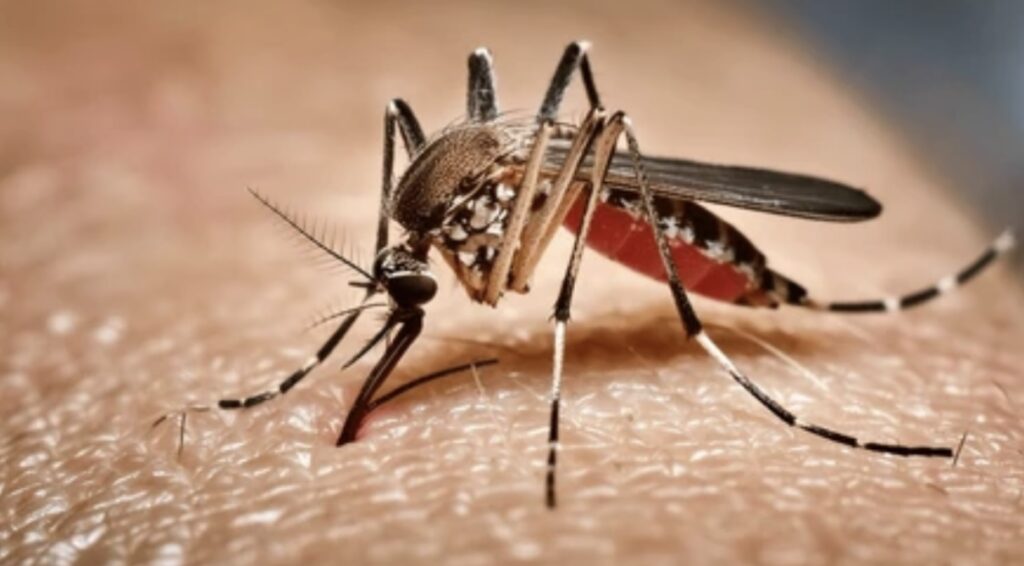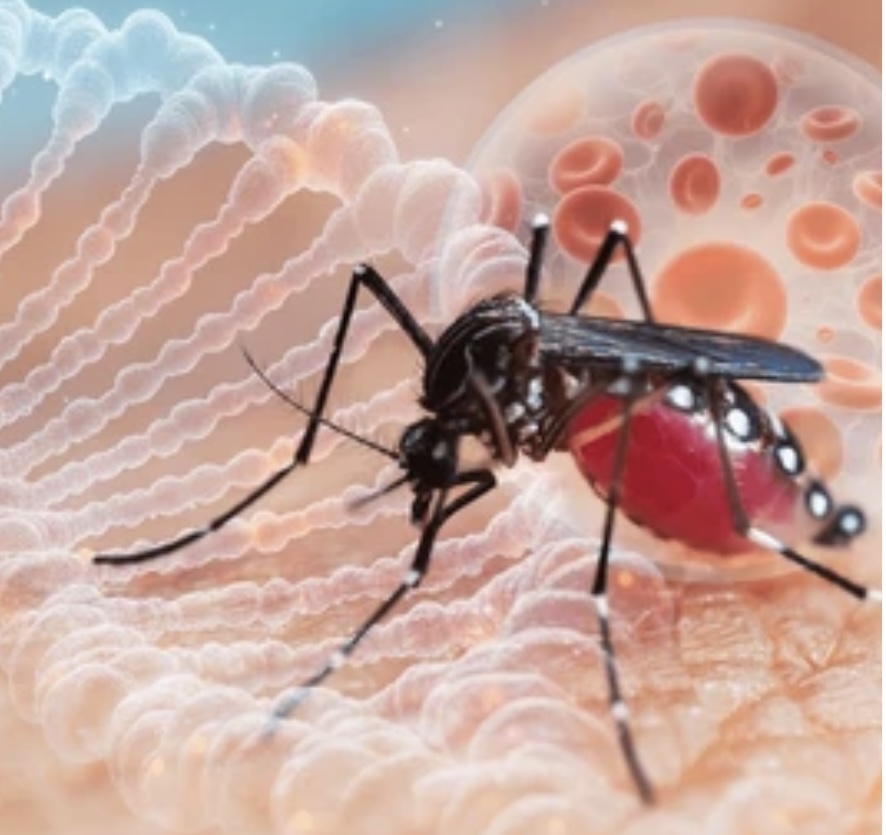Introduction
Dengue fever and its vector: Dengue fever is a mosquito-borne viral disease that has become a significant public health concern, particularly in tropical and subtropical regions. With millions of cases reported worldwide each year, dengue fever is transmitted primarily by the Aedes aegypti and Aedes albopictus mosquitoes. These vectors play a critical role in the disease’s spread, and understanding their life cycle is essential for developing effective control and prevention strategies. This article will explore the epidemiology of dengue, its symptoms, and the detailed life cycle of the dengue virus, focusing on the role of the mosquito vector.
Understanding Dengue Fever: An Overview
Dengue fever is caused by the dengue virus (DENV), which belongs to the Flaviviridae family. There are four distinct serotypes of the virus—DENV-1, DENV-2, DENV-3, and DENV-4. Infection with one serotype provides lifelong immunity to that specific serotype but not to others. As a result, individuals can experience dengue fever multiple times, with subsequent infections often increasing the risk of severe complications such as Dengue Hemorrhagic Fever (DHF) or Dengue Shock Syndrome (DSS).
Symptoms of Dengue Fever
The symptoms of dengue fever typically appear 4–10 days after being bitten by an infected mosquito. The clinical manifestations vary from mild to severe and may include:
- High fever (often reaching 104°F/40°C)
- Severe headache and pain behind the eyes
- Joint and muscle pain (sometimes referred to as “breakbone fever”)
- Nausea and vomiting
- Skin rashes
- Mild bleeding (e.g., from the gums or nose)
- Fatigue and restlessness
In severe cases, dengue fever can lead to plasma leakage, fluid accumulation, respiratory distress, severe bleeding, and organ impairment. Early detection and proper medical care are essential to reduce mortality rates in severe dengue.
The Vector: Aedes aegypti and Aedes albopictus

Ae. aegypti and Ae. albopictus mosquitoes are the primary vectors responsible for transmitting the dengue virus to humans. These mosquitoes thrive in warm, humid environments, often living in close proximity to human populations. They are aggressive daytime feeders, with peak biting activity occurring in the early morning and late afternoon.
Key Characteristics of the Aedes Mosquitoes
- Distinct Appearance: Ae. aegypti mosquitoes have white markings on their legs and a lyre-shaped pattern of scales on the thorax. Ae. albopictus, also known as the Asian tiger mosquito, is characterized by its white-striped body and legs.
- Breeding Habits: Aedes mosquitoes breed in stagnant water, often in artificial containers like flower pots, water storage containers, discarded tires, and clogged drains. This breeding behavior allows them to proliferate in both urban and rural environments.
- Feeding Behavior: These mosquitoes prefer to feed on human blood and are highly anthropophilic. They bite multiple humans during a single feeding period, which increases the likelihood of virus transmission.
The Dengue Virus Life Cycle
The dengue virus (DENV) lifecycle is a complex process involving both the human host and the mosquito vector. The mosquito plays a vital role in acquiring, incubating, and transmitting the virus. The life cycle can be divided into two main stages: the extrinsic (mosquito) cycle and the intrinsic (human) cycle.
1. The Extrinsic Cycle: Inside the Mosquito
The extrinsic cycle refers to the part of the dengue virus lifecycle that occurs within the mosquito vector.
- Blood Meal and Viral Acquisition: When a female Aedes mosquito bites a human infected with the dengue virus, it ingests blood that contains the virus. The virus enters the mosquito’s midgut (stomach) and begins to replicate.
- Viral Replication: Over a period of 8 to 12 days, the virus spreads from the midgut to the mosquito’s salivary glands. This period is known as the extrinsic incubation period (EIP). During this time, the mosquito remains infected but cannot yet transmit the virus.
- Transmission to Humans: Once the virus reaches the salivary glands, the mosquito becomes capable of transmitting dengue to humans. When it bites a human, the virus is injected into the bloodstream along with saliva, which contains anticoagulants that help the mosquito feed.
2. The Intrinsic Cycle: Inside the Human Host
The intrinsic cycle refers to the virus’s replication and spread within the human host after being transmitted by the mosquito.
- Entry into the Bloodstream: After the mosquito bite, the dengue virus enters the human bloodstream and infects immune cells, primarily monocytes, macrophages, and dendritic cells. The virus replicates within these cells and spreads throughout the body.
- Viral Replication: The infected immune cells transport the virus to lymph nodes, where further viral replication occurs. From there, the virus spreads to other tissues and organs, triggering the immune system’s response and leading to the symptoms of dengue fever.
- Immune Response and Symptoms: The immune system responds to the infection by releasing cytokines and other inflammatory mediators, leading to fever, pain, and other symptoms associated with dengue. The severity of the symptoms depends on factors such as the patient’s immune status and whether they have been previously infected by a different dengue serotype.
Life Cycle of Aedes Mosquitoes: Crucial for Transmission
Understanding the life cycle of the Aedes mosquitoes is key to controlling the spread of dengue fever. The mosquito’s life cycle has four stages: egg, larva, pupa, and adult. This entire process takes about 8 to 10 days, depending on environmental conditions such as temperature and water availability.
1. Egg Stage
Female Aedes mosquitoes lay their eggs in containers with stagnant water. These eggs are highly resilient and can survive for several months without water, waiting for favorable conditions. Once submerged in water, the eggs hatch into larvae within a few days.
2. Larval Stage
The larvae, commonly referred to as “wrigglers,” are aquatic and feed on organic matter in the water. They undergo several molts as they grow. The larval stage typically lasts 4 to 7 days, depending on temperature and food availability.
3. Pupal Stage
After the final molt, the larvae develop into pupae, a non-feeding stage that lasts for 1 to 3 days. During this stage, the mosquito undergoes metamorphosis, transitioning into its adult form.
4. Adult Stage
The adult mosquito emerges from the pupa and, after a short resting period, is ready to feed and mate. Female mosquitoes require a blood meal to produce eggs, making them the primary agents of disease transmission. After mating, females can lay hundreds of eggs in their lifetime, continuing the cycle of transmission.
Control and Prevention Strategies

Controlling the population of Aedes mosquitoes and preventing their contact with humans are crucial strategies in reducing the spread of dengue. Key measures include:
- Elimination of Breeding Sites: Reducing sources of stagnant water, such as discarded containers, old tires, and clogged drains, is essential for preventing mosquito breeding.
- Use of Mosquito Nets and Repellents: Individuals can protect themselves from mosquito bites by using insect repellents, wearing long-sleeved clothing, and sleeping under mosquito nets.
- Biological and Chemical Control: Insecticides and larvicides can be used to control adult mosquito populations and larvae. Biological methods, such as the introduction of mosquito predators like fish or the use of bacteria (e.g., Wolbachia) to reduce mosquito fertility, are also effective.
- Public Awareness and Education: Raising awareness about dengue transmission and mosquito control is vital for encouraging community participation in prevention efforts.
Conclusion
Dengue fever remains a serious global health issue, with its transmission closely linked to the lifecycle of Aedes mosquitoes. Understanding both the life cycle of the dengue virus and its mosquito vectors is crucial for developing effective control and prevention strategies. Public health interventions focused on reducing mosquito populations and preventing human-mosquito contact are key to limiting the spread of dengue fever and protecting vulnerable populations.
Discover more from ZOOLOGYTALKS
Subscribe to get the latest posts sent to your email.


